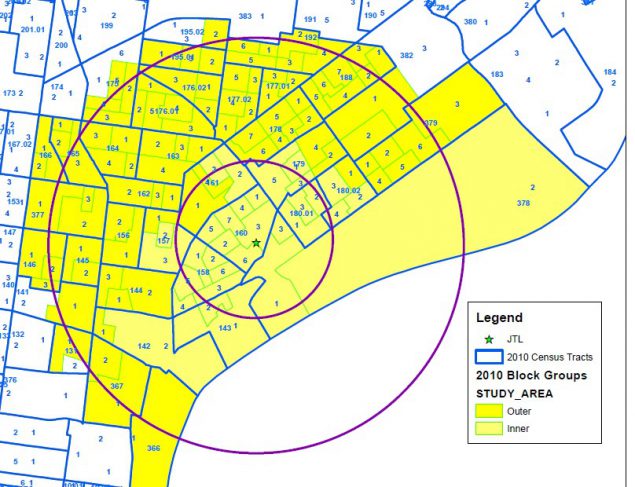Overview
A History of Lead at the Study Site
The John T. Lewis site, most recently known as the Anzon site, is in the Kensington area of Philadelphia. Lead paint production and other lead processing operations occurred at the site for nearly 150 years (from 1849 to 1996). Plant emissions, equipment malfunctions, and fires at the facility released lead into the surrounding community. In addition to the John T. Lewis facility, a number of other industrial sources of lead used to operate in this community. Residential homes have been located near the facility dating back to the 1800s. In the late 1990s and early 2000s, the facility grounds were redeveloped into a multiuse commercial complex.
In July 2014, Centers for Disease Control (CDC)/Agency for Toxic Substances and Disease Registry (ATSDR) and the U.S. Environmental Protection Agency (EPA) in collaboration with the Philadelphia Department of Public Health (PDPH), conducted a childhood blood lead investigation in selected Philadelphia neighborhoods nearby the former J.T. Lewis facility. The purpose of this neighborhood investigation was to evaluate the relationship between child blood lead levels and water, soil and dust in the child’s household environment. The investigation area (Figures 1 and 2) for the 2014 childhood blood lead investigation currently consists of residential homes with scattered industrial, commercial, and educational/service facilities. Protecting children from exposure to lead is important to lifelong good health. No safe blood lead level in children has been identified. Even low levels of lead in blood have been shown to affect IQ, ability to pay attention, and academic achievement. And the effect of lead exposure cannot be corrected.
We did this study to:
- evaluate the relationship between blood lead levels and potential lead contamination in tap water, soil, and dust in children’s homes and yards.
- determine if young children in the community were exposed to elevated levels of lead; and
- help scientists develop better ways of identifying lead exposure in young children where they live.
How We Conducted the Study
We recruited participants for the study during a two-week period in July 2014. We selected households at random from various neighborhoods near the site, including Port Richmond, Kensington, and Northern Liberties. If the head of the household agreed to participate in the study, we offered to do 4 things:
- Collect tap water, soil, and indoor dust samples and analyze them for lead.
- Collect and analyze a blood sample from children 9 months through 8 years of age who lived in the participating households.
- Ask the heads of households/guardians of children enrolled in the study to answer questions on factors potentially associated with lead exposure and other environmental hazards.
- Conduct a Healthy Homes survey at each household.

The JT Lewis facility was one of multiple facilities featured in the USA Today article Ghost Factories: Poison in the Ground, an investigative piece that reported the potential public health impacts of abandoned “lead smelters” (Figure 2). The issue was first described in a 2001 paper published by William P. Eckel in the American Journal of Public Health titled Discovering Unrecognized Lead-Smelting Sites by Historical Methods (AJPH 2001;91(4):625-7.)
